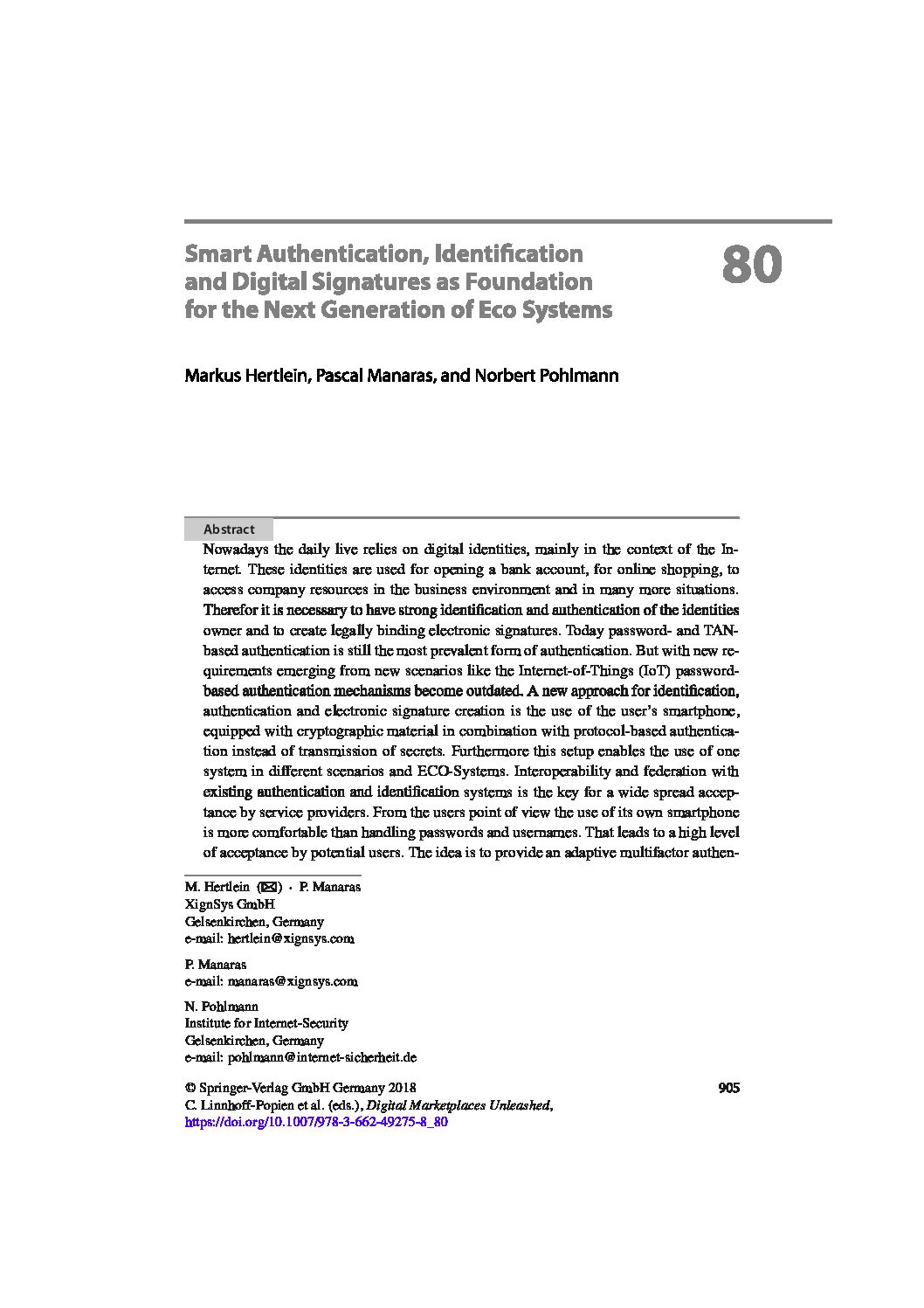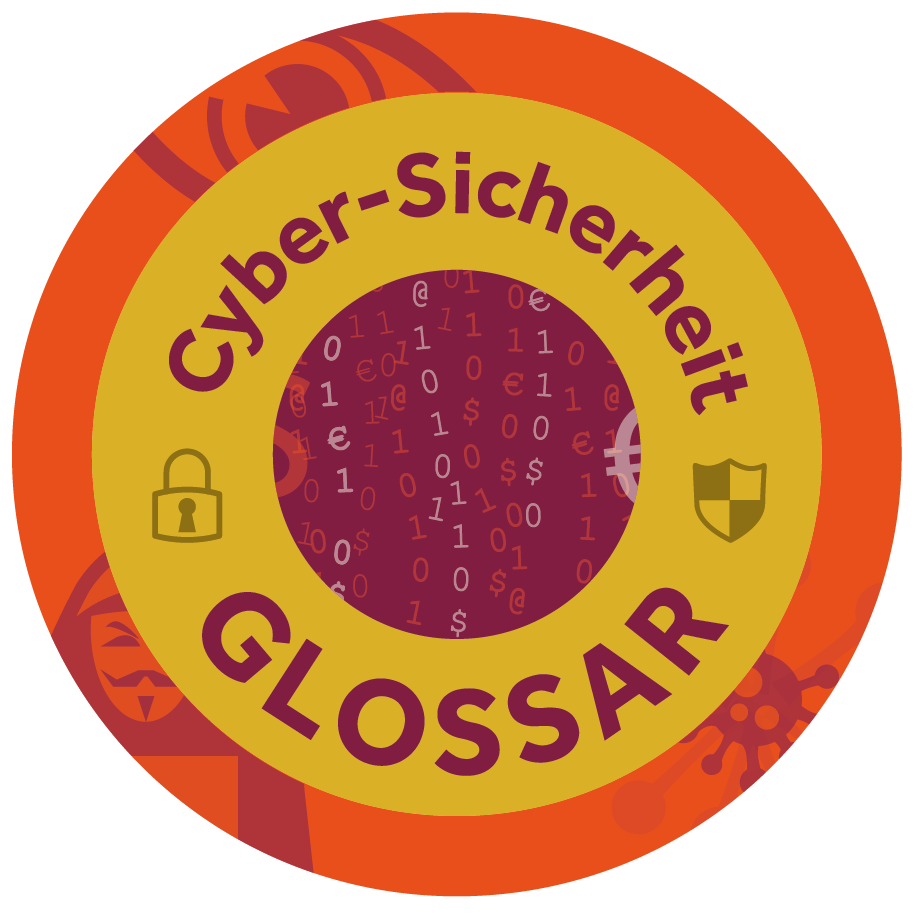M. Hertlein, P. Manaras, N. Pohlmann:,
“Smart Authentication, Identification and Digital Signatures as Foundation for the Next Generation of Eco Systems”,
In the Book ”Digital Marketplaces Unleashed”,
Editors: Claudia Linnhoff-Popien, Ralf Schneider and Michael Zaddach,
Springer-Verlag GmbH Germany,
2017
Nowadays the daily live relies on digital identities, mainly in the context of the Internet. These identities are used for opening a bank account, for online shopping, to access company resources in the business environment and in many more situations. Therefor it is necessary to have strong identification and authentication of the identities owner and to create legally binding electronic signatures. Today password- and TAN-based authentication is still the most prevalent form of authentication. But with new requirements emerging from new scenarios like the Internet-of-Things (IoT) password-based authentication mechanisms become outdated. A new approach for identification, authentication and electronic signature creation is the use of the user’s smartphone, equipped with cryptographic material in combination with protocol-based authentication instead of transmission of secrets. Furthermore this setup enables the use of one system in different scenarios and ECO-Systems. Interoperability and federation with existing authentication and identification systems is the key for a wide spread acceptance by service providers. From the users point of view the use of its own smartphone is more comfortable than handling passwords and usernames. That leads to a high level of acceptance by potential users. The idea is to provide an adaptive multifactor authentication that can be used flexibly in many different use cases from business or IoT-platforms to the use in the urban environment of smart-cities. For an easy integration and a high degree of usability different entry points for authentication and electronic signature creation are used. As example for a modern and smart identification, authentication and electronic signature system the XignQR system will be described in the following chapters.
Weitere Informationen zum Thema “Authentifikation”: Artikel:
„Smartphone Bürger-ID – IT-Sicherheit als Wegbereiter für die Digitalisierung“
“Risikobasierte und adaptive Authentifizierung”
„Smart Authentication, Identification and Digital Signatures as Foundation for the Next Generation of Eco Systems”
“An Usable Application for Authentication, Communication and Access Management in the Internet Of Things”
„Die Zeit nach dem Passwort – Handhabbare Multifaktor-Authentifizierung für ein gesundes Eco-System”
„Abschied vom Passwort – Authentifikation für ein gereiftes Internet“
“Bring Your Own Device For Authentication (BYOD4A) – The Xign–System“
“Ein OpenID-Provider mit Proxy-Funktionalität für den nPA”
Vorträge:
„Smart Authentifikation, Identifikation und digitale Signaturen als Grundlage zukünftiger Ökosysteme“
„Restrisikoanalyse Online-Authentisierung“ Vorlesung: „Identifikation und Authentifikation“
Glossareintrag: „Authentifikation“
Studie für das BMI: “Restrisiken beim Einsatz der AusweisApp auf dem Bürger-PC zur Online Authentisierung mit Penetrations-Test” Informationen über das Lehrbuch: „Cyber-Sicherheit“
kostenlos downloaden | 




